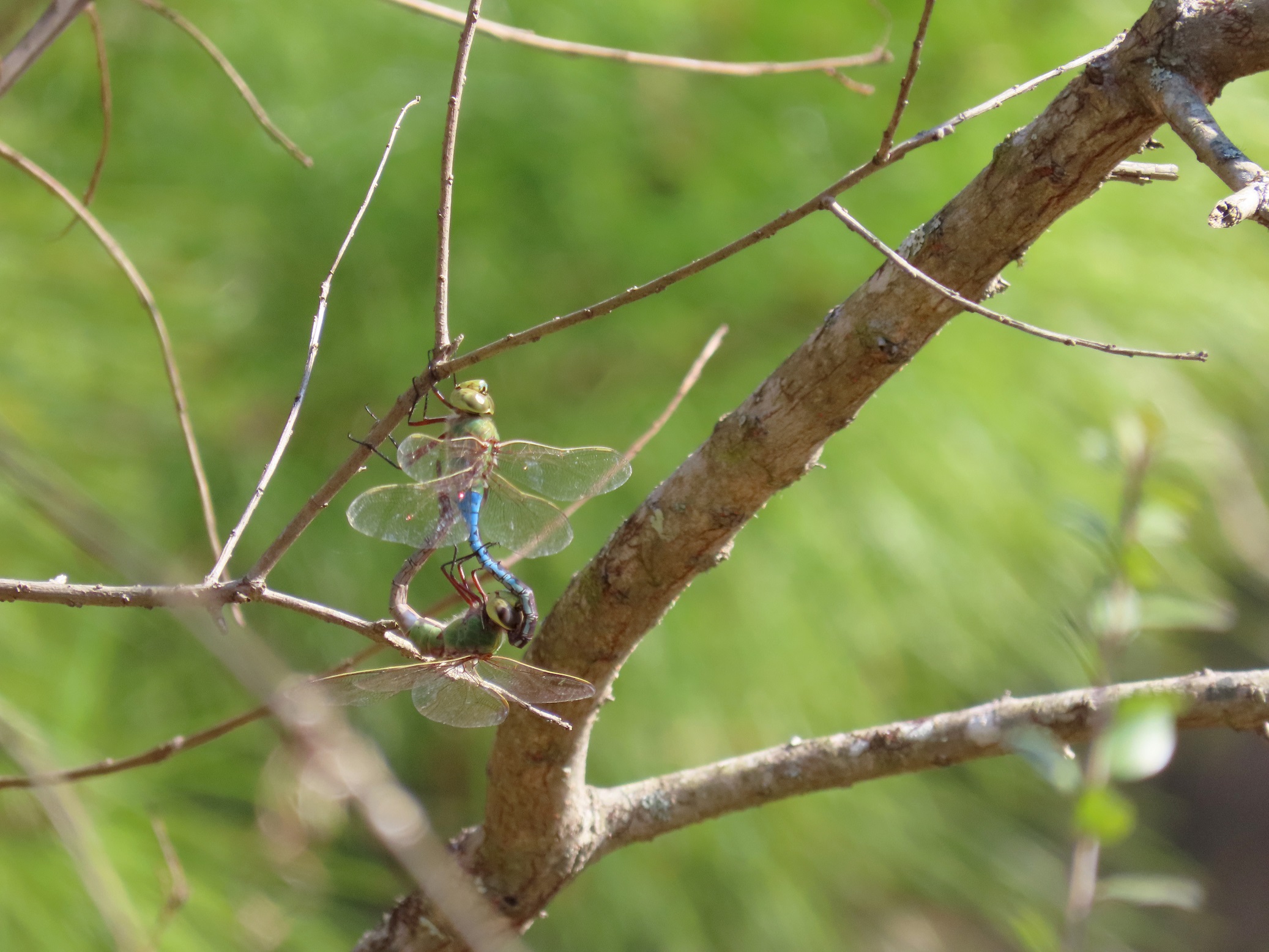
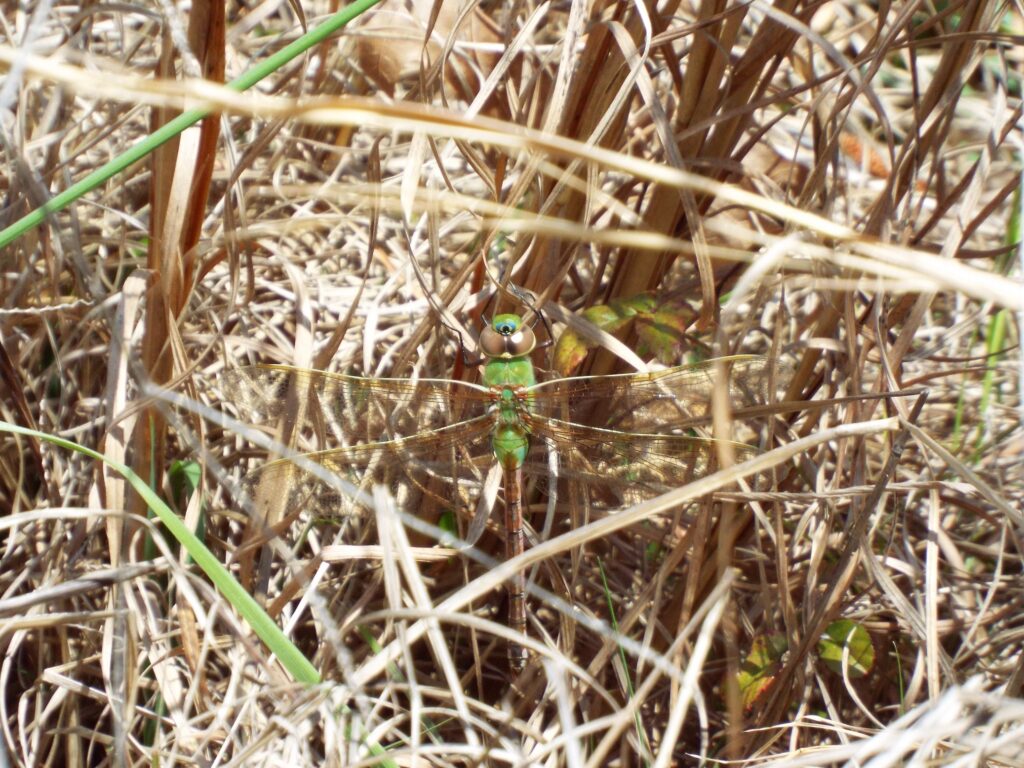
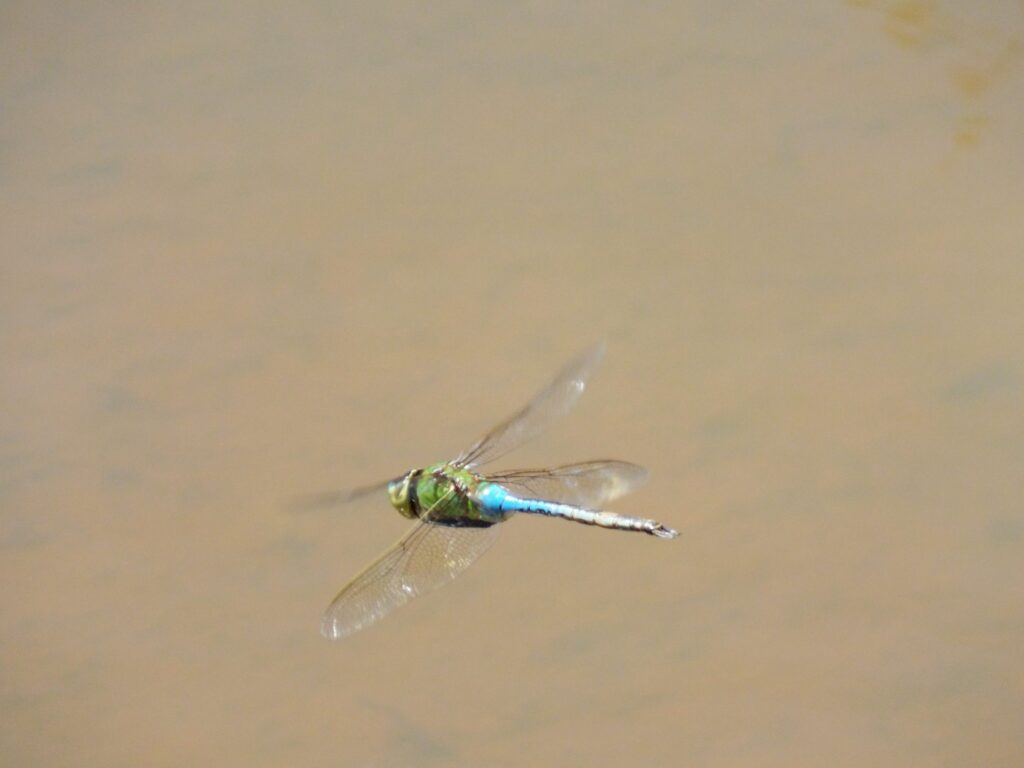
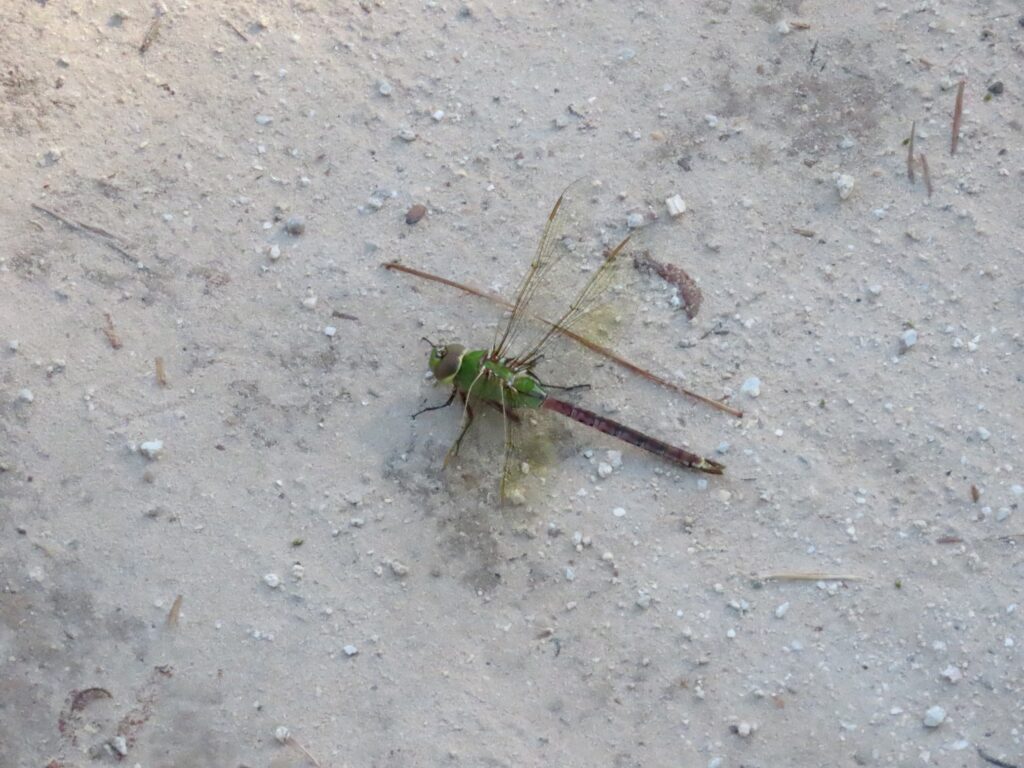
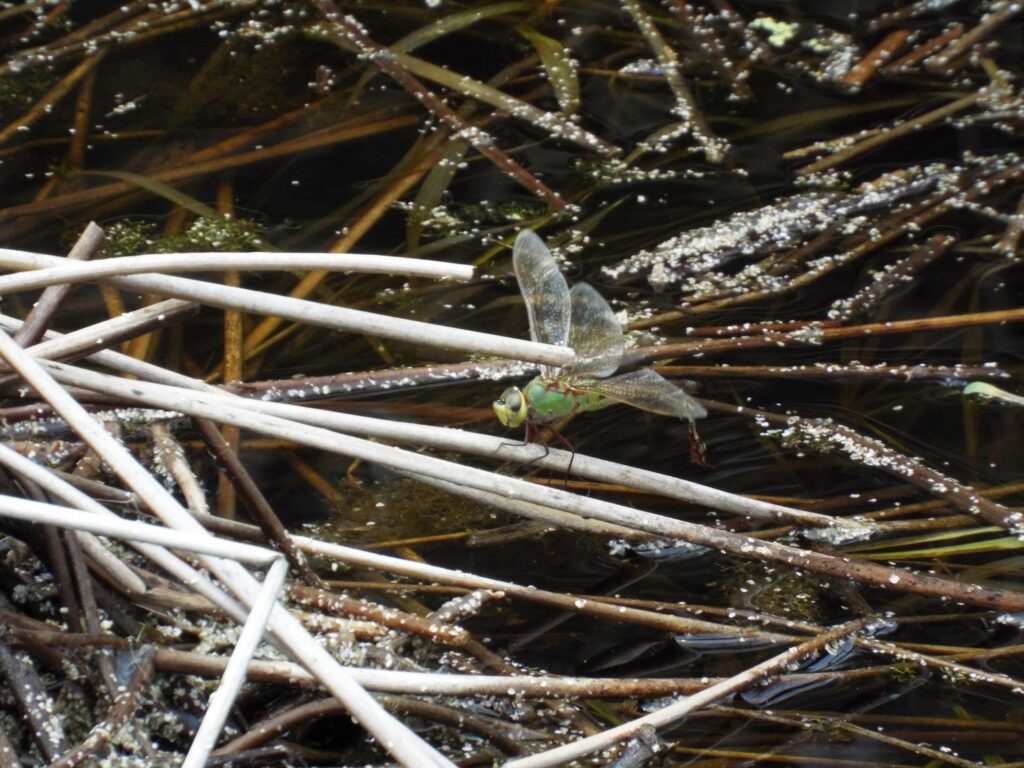
This week for Flora and Fauna Friday it’s the hovering hunter lurking on every wetland’s edge, the Common Green Darner (Anax junius).
The Common Green Darner is an aptly named dragonfly. It’s common, abundant, and widespread. It’s found across all of South Carolina and the whole of the contiguous United States. The Common Green Darner is a big dragonfly, growing to about three inches long. Their thorax is solid Scheele’s-green with their head a more yellowish shade and sporting two huge compound eyes. For some color contrast, in males their abdomen is a brilliant turquoise-blue and, in females, a faded cinnabar-red. Their wings are mainly clear, with a faint wash of amber along the veins and a straw-yellow pterostigma near the tip. The family name “darner” comes from the shape of their abdomen and its cerci, the terminal appendages at the abdomen’s tip. In many Darners, the cerci of both sexes are long and, when at rest, overlap with an “eye of a needle” shape, giving the whole abdomen the silhouette of a darning needle, hence ‘Darners’. Cerci, along with the epiproct in males, are collectively called “claspers”. Males use their claspers to hold onto a female’s neck while mating. The Common Green Darner is unique among our southeastern Darners for laying eggs in tandem. Males continue to cling to the female after mating, even flying in line with her, until she lays her eggs. Eggs are often laid under floating vegetation or debris on the surface of a still pond or freshwater marsh.
The baby dragonflies hatch as nymphs, called naiads. The little naiads are just as voracious of predators as ‘ma and ‘pa, lurking in the murk to ambush unsuspecting prey with their projectile mouths. The naiads will patrol their watery nursery, sometimes for several years, until large enough to eclose into adults. Adult Common Green Darners, like all other dragonflies, are skilled hunters and agile acrobats. They nourish themselves on a steady diet of anything smaller than them that catches their omnidirectional eye in the sky. Darners, unlike most dragonflies, rarely land during the day. Common Green Darners prefer to hover on the wing or course across the water at speed in search of prey.
Common Green Darners are powerful flyers and will travel long distances to find a suitable abode, staking a claim collectively at every suitable pond and puddle in sight. They also perform a multi-generational migration, similar to the Monarch butterfly. Common Green Darners fly north each spring in search of open territory. They start a family there and then pass away. Late that summer or the following year, their offspring emerge and circle back south to escape the cold and hitch their wagon in the sub-tropics. Their grandchildren emerge in fall and repeat the multi-generational circuit the following spring. This allows the species to live a nomadic lifestyle and take advantage of a much wider geographic range, becoming more abundant, staying genetically diverse, but never over-specializing to one specific habitat or eco-region.